WORLD TRAVEL NEWS ARTICLE
PERU
Peru in the 15th century was the centre of the mighty Inca Empire, rich in gold and silver, but sadly nowadays it is struggling to defeat widespread poverty. Occupying a wide slice along the west of the South American continent, Peru is in three distinct zones running parallel to the Pacific Ocean: the coastal plain, the high sierra of the Andes and, beyond the mountains, the tropical rainforest.
For Peru, think vast. The Andes, the world’s longest mountain chain, form the country’s backbone, linking it to Ecuador in the north and on up into Colombia, and to Chile and Argentina in the south. Peru’s Pacific coastline boasts glorious beaches, but it also suffers from earthquakes and floods and there are long stretches of barren emptiness. Beyond the Andes is the pure rainforest of the Amazon basin, itself the world’s most extensive wilderness area, which stretches over nine South American countries and supports over 25,000 plant species and a wide range of wildlife.
Peru’s archaeological heritage is astonishing; because the current flowing north from Antarctica cools the air, little rain is able to fall, and thus the Incan ruins have been preserved, along with those of Amerindian civilisations dating back thousands of years earlier. In the Andean heartland, Amerindians in their bowler hats still herd llamas, vicuñas and alpacas, and they farm the terraces created by the Incas on the inhospitable terrain of the Altiplano (‘high plateau’) near the border with Bolivia. In the centre of this region is the remarkable freshwater Lake Titicaca, ringed by the snow-capped Andean mountains, over 8,000 square kilometres (3,000 square miles) in size and containing 30 or more islands. Myth has it that the central island of the lake, Isla del Sol, was the birthplace of the Inca Empire
Incidentally, it was the Incas who discovered the cooking potential of the potato, so spud-loving Brits have a lot to thank them for!)
The currency of Peru is the Nuevo Sol, divided into 100 céntimos. For the current exchange rate, visit www.xe.com
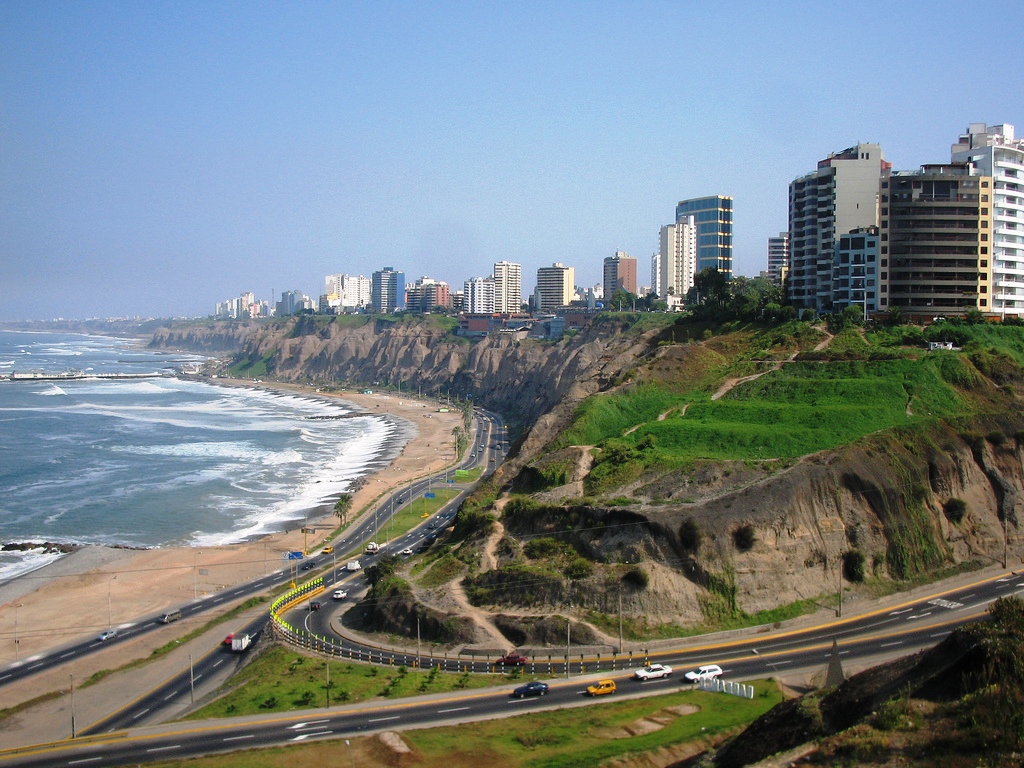
Lima Beachfront
The capital of Peru is Lima, served by the airport Jorge Chavez International, some 13 kilometres (eight miles) to the west of the city, at the seaport of Callao. For the latest visa requirements, visit www.projectvisa.com
Lima, the City of Kings, was founded by conquistador Francisco Pizarro on Three Kings Day (Epiphany) in 1535. Today, in excess of eight million people – a third of the population of Peru – live here in Lima, which for 300 years was the most important and the busiest city of South America. Those prosperous years have left their mark in glorious colonial-style architecture and elegant squares.
What to see and to do in Lima
Explore Downtown to admire its colonial mansions and churches. The Palacio de Gobierno (Government Palace) on Plaza Mayor (Main Square) faces the Cathedral, the Palazio del Arzobispo (Archbishop’s Palace) and the Palacio Municipal (Town Hall) – all are well worth a visit. Also see the nearby 17th-century Monasterio de San Francisco and its ancient catacombs, mosaics and frescoes. The Gold Museum in Monterrico houses the lifetime collection of the late Miguel Mujica Gallo.

The portico of Lima Railway Station
The railway station (Estación Desamparados) is made of iron, brought all the way from England and assembled in situ in 1908. A collection of ancient pottery and artwork can be viewed in the Larco Herrera Museum, including a display of erotic pottery excavated by Rafael Larco Hoyle.
In the modern suburb of Mira Flores you can visit the Indian market, a colourful and noisy meeting place which offers souvenirs to tourists. Mira Flores is the best place for street cafes, theatres, boutiques and nightclubs.
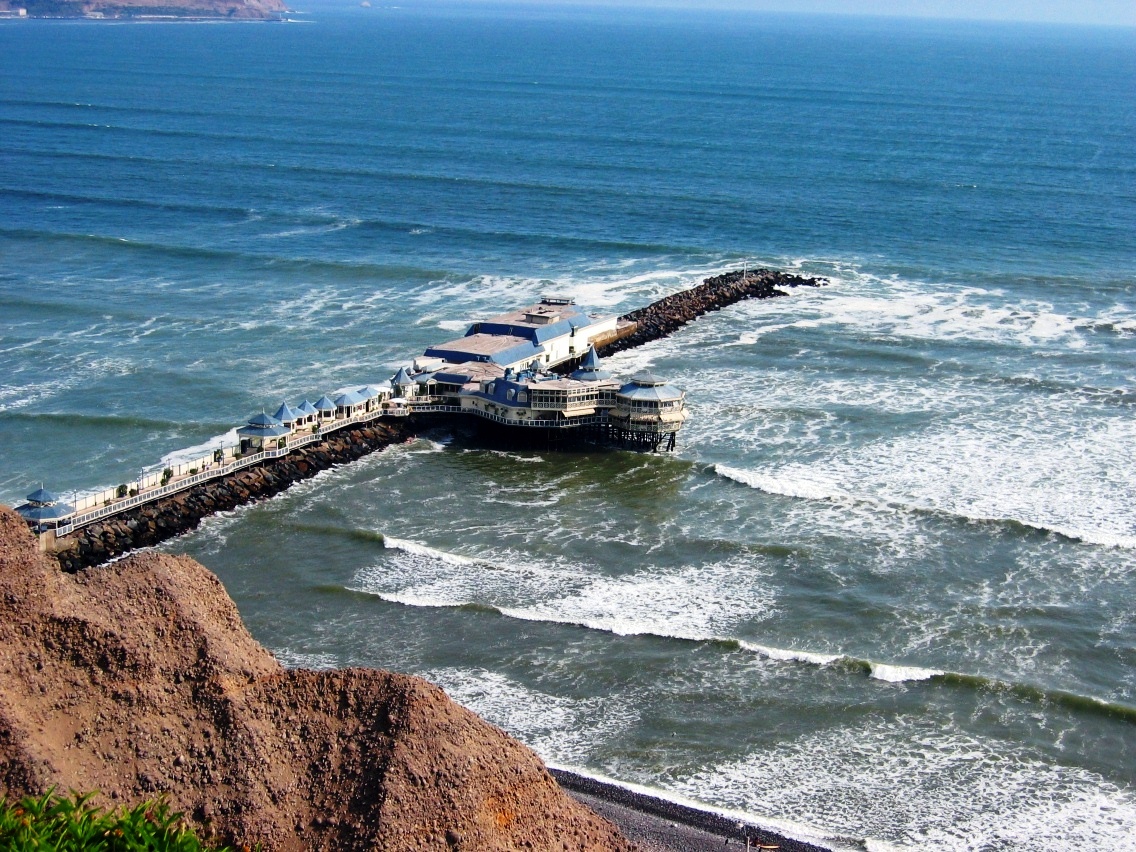
Mira Flores
Lima by night is lively and loud, and its prominent buildings are beautifully illuminated. Its most active square is Plaza San Martin, linked to Plaza Mayor by a pedestrian walkway. A choice of worldwide cuisine is available in the city’s many restaurants and colonial-style hotels offer a taste of what life was like here a hundred years ago.
Nazca Lines
From Lima you can take a short flight north over Nazca to view the huge and mysterious figures, believed to be more than two thousand years old, drawn on the ground. It is prohibited to walk around here, but a (slow) bus ride will take you to a viewing platform if you are unwilling to fly.
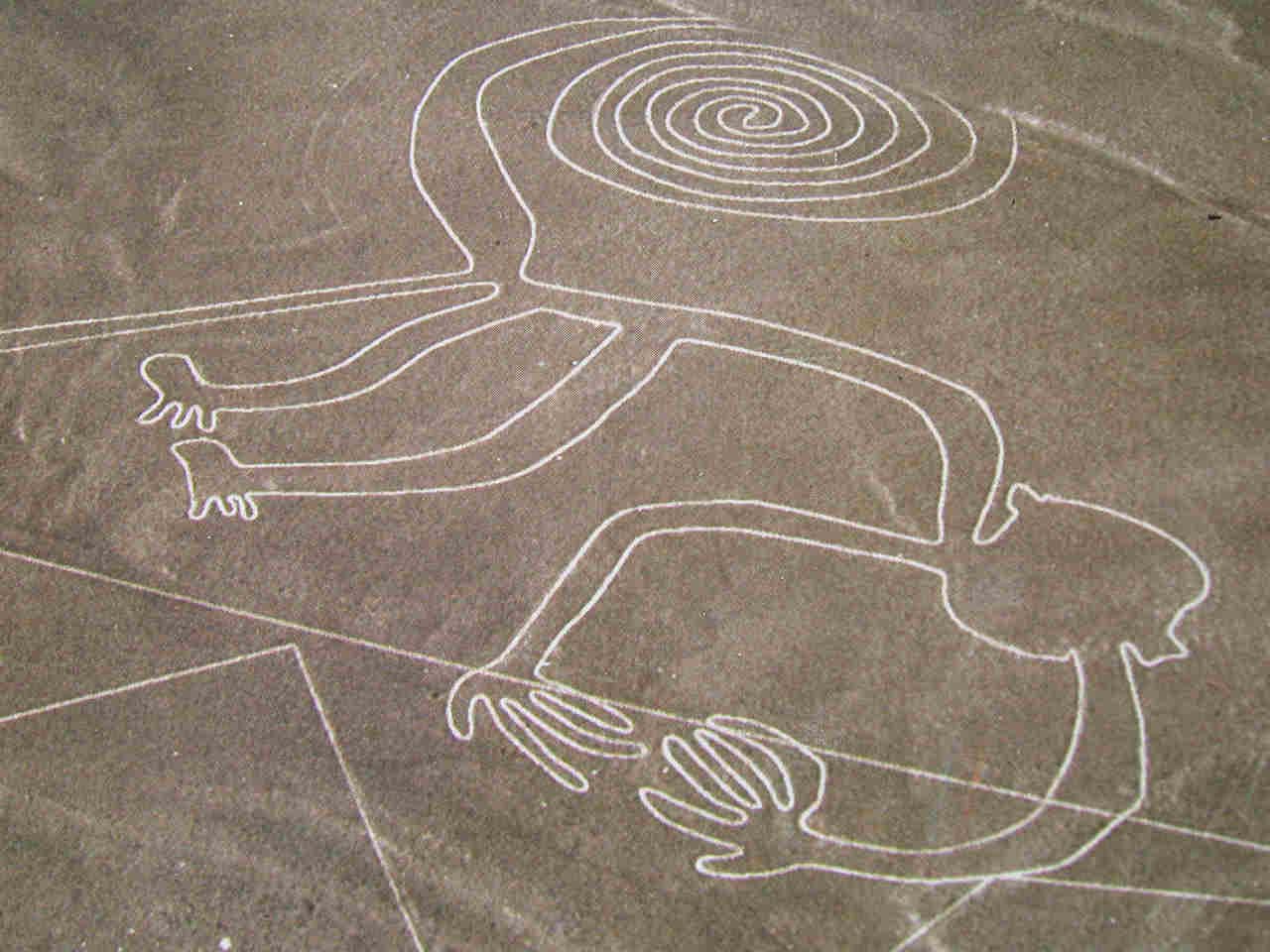
Nazca Monkey
Cusco and Machu Picchu
For most visitors to Peru, Machu Picchu is the biggest attraction. You fly from Lima to Cusco, from where you travel by train and bus to Machu Picchu, for a two-hour conducted tour of the site.
Cusco offers plenty of interest. In Incan times this was a city of some sophistication, with 15,000 inhabitants enjoying water systems, paved streets and no poverty. One can but gasp at the sheer size and complexity of the huge walls of stones intricately fitted together; some form the foundations of later Spanish colonial buildings added when the Conquistadors arrived.
Be aware that you will be at 3,200 metres (10,500 feet) above sea level – you need to allow time to acclimatise. When possible altitude sickness is behind you, climb up to Sacsayhuaman, the fortress that hangs over Cusco, for some spectacular views (or go easy on yourself and hire a cab). See the Temple of the Sun (Korikancha), which nowadays forms part of the Spanish Church of Santo Domingo, and also the elegant Plaza de Armas. The Cathedral needs to be visited, mixing as it does two architectural styles and containing some beautiful woodwork carving. Tours in and around Cusco are available, and if you intend to linger before heading out to Machu Picchu, then you will cover more ground by taking one or more of these tours.
Machu Picchu has a railway station, Aguas Calientes (‘hot waters’), and a hotel (Machu Picchu Sanctuary Lodge). It takes some two-and-a-half hours by train from Cusco to cover the 120 kilometres (75 miles), and then it’s another hour on the bus. Alternatively, you can hike the Inca Trail to arrive at the site. By this time, you are at an altitude 900 metres (2,950 feet) lower than in Cusco, and amid semi-tropical land.
Machu Picchu means ‘Old Peak’ and higher up, overhanging Machu Picchu, is Huayna Picchu (‘Young Peak’); from its viewpoint you can – if prepared for the hike up there – enjoy an eagle’s-eye perspective of this amazing site, and on down to the Urubamba River flowing far below.
Cut and assembled with incredible precision, the buildings must originally have been two storeys high, possibly topped with thatched roofs. There were streets, aqueducts (pure water still flows), fountains, tombs, temples and an observatory.
The popular term ‘Lost City’ is a misnomer – Machu Picchu was more of a sacred sanctuary deliberately hidden from the eyes of the world – forgotten, perhaps, when the Spanish destroyed the Incas, but even then mislaid, rather than lost. It was in 1911 that American archaeologist, Hiram Bingham, pushed aside the jungle vegetation to find treasures beyond his wildest dreams.
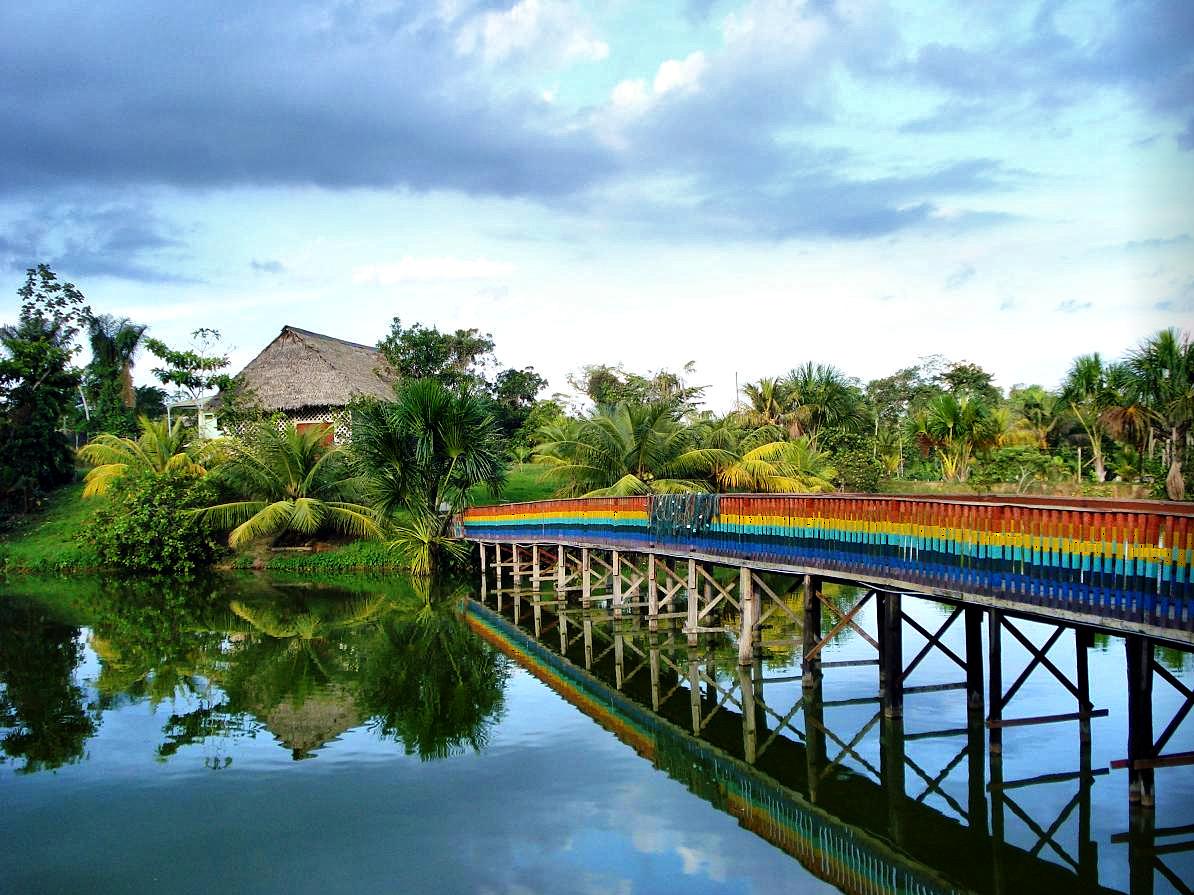
Iquitos
Iquitos
In the far northeast of Peru, Amazon River excursions are on offer to give tourists a taste of the rainforest. (If you intend to venture into the Amazon Basin you must be vaccinated against Yellow Fever.) Regular flights ply between Lima International and Iquitos, the rubber-boom town of 400,000 people. Most of the safaris use lodge accommodation so as to combine tourist luxury with the rawness of the 40-kilometre (25-mile) river excursion, and include local tribal entertainment by night and craft demonstrations by day, when souvenirs are on sale. Most tours also provide at least one walk in the pure virgin jungle, and the possibility of seeing wildlife close at hand. The jungle is reached remarkably quickly after leaving the outskirts of Iquitos, but you may choose to travel the 100 kilometres (62 miles) to visit the Reserva Nacional Pacaya-Samira if your quest for wildlife is of importance.
Arequipa
Arequipa is Peru’s second most important city, in the far southwest of the country, not far from the frontier with Chile; it deserves a visit so you can admire the white volcanic stone buildings (hence its nickname ‘White City’). The city, at the foot of Misti Volcano, has an airport and is within visiting distance of the magical Lago Titicaca high in the mountains. Many of the Arequipa buildings from the colonial age are single storey and very charming, adorned with patios and gardens. Visit the Cathedral with its Belgian organ and French pulpit, and the Convent of Santa Catalina – but don’t believe all the tales you are told about the luxury-addicted nuns who resided there!

Decorated columns in Arequipa
Heading up the coast from Lima you will find the cities of Chiclayo and Trujillo, both with their own airports and antiquities.
Chiclayo is a city of commerce, ringed by an area of sugar cane crops. The Lord of Sipan (the Tutankhamun of the Americas) is buried near here and his mausoleum and vast treasure troves of gold, silver and copper jewellery from the period of 300 AD draw many visitors who continue on to see the pyramids at Tucume.
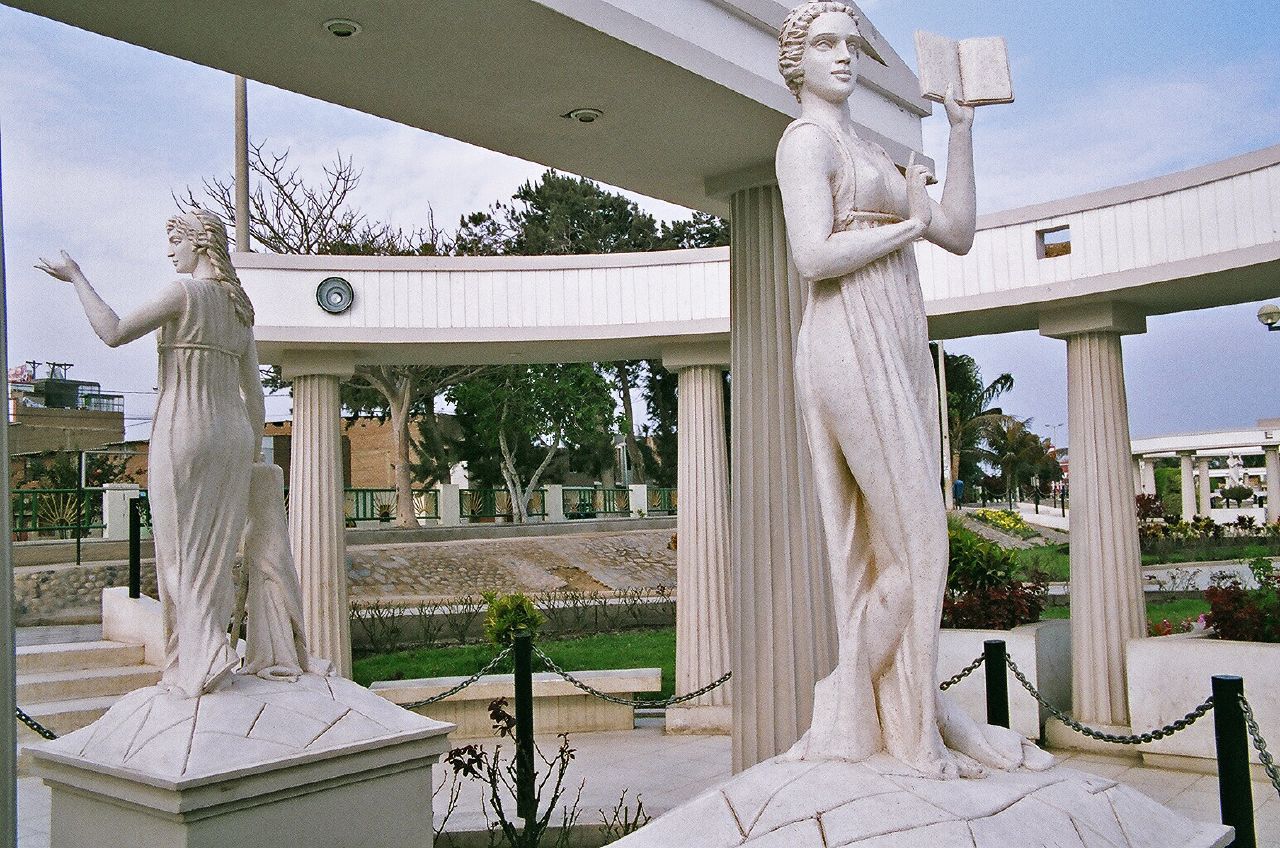
Parque de las Musas in Chiclayo
Trujillo is very Spanish in its layout and architecture, reflecting its founders’ tastes of 1535. Wooden balconies, marble and ceramics, and indeed the name Trujillo all pay tribute to Pizarro who was born in Trujillo Extremadura.
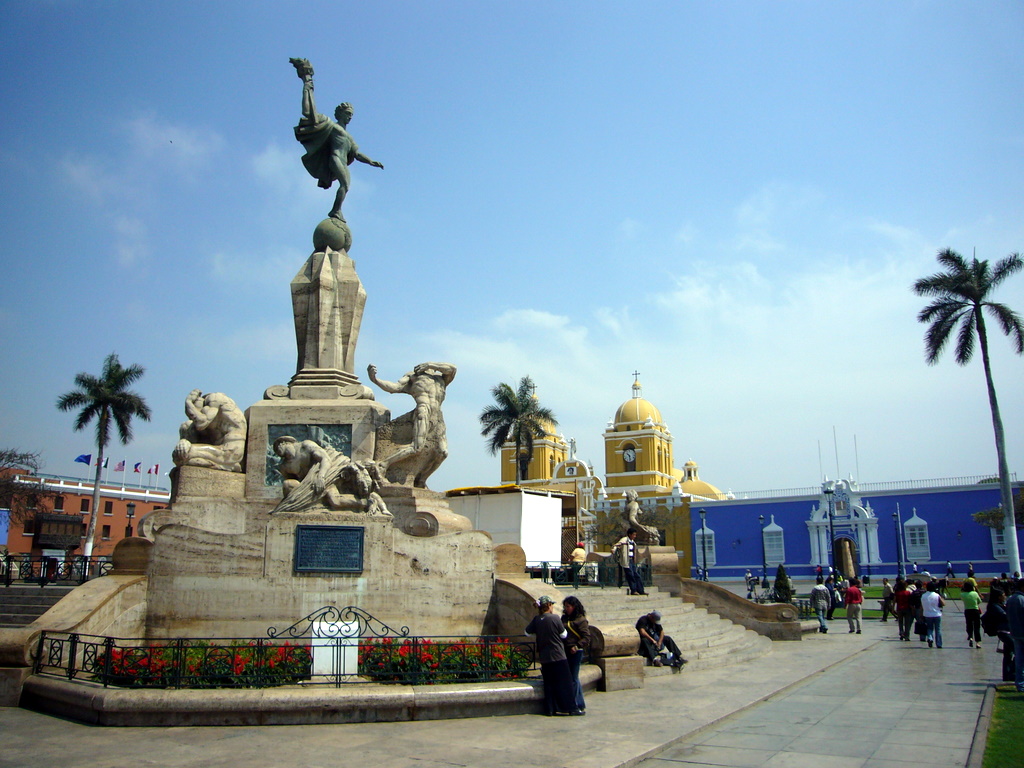
Trujillo
From Trujillo to the northwest is Chan Chan – an ancient adobe city of mud brick homes which once belonged to the Chimu people who farmed the surrounding countryside with a sophistication comparable to that of the present day, but who left no written records to explain themselves. Southeast of Trujillo, the Tombs of the Sun and the Moon are to be found – 40-metre (130-feet) high pyramid temples of the Moche people, dating from 100 BC-850 AD. The totora reed boats seen on Lake Titicaca are still used by fishermen here on the coast at the picturesque village of Huanchaco.
Getting There:
The main international gateway into Peru is Jorge Chávez International Airport. It is located in Callao, 13 kilometers (8 miles) from the Historic Centre of Lima
For information about weather conditions, visit www.worldweather.org
You may also like to read
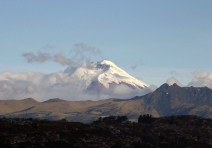
ECUADOR - South America
As Tour-smart shows, for central vacations it would be hard to beat Ecuador as it is situated on the line of the equator.

CHILE - South America
Long, diverse and fascinating, Tour-smart introduces you to Chile, a ribbon of land 2,700 miles long on the Pacific coast of South America.

Comments